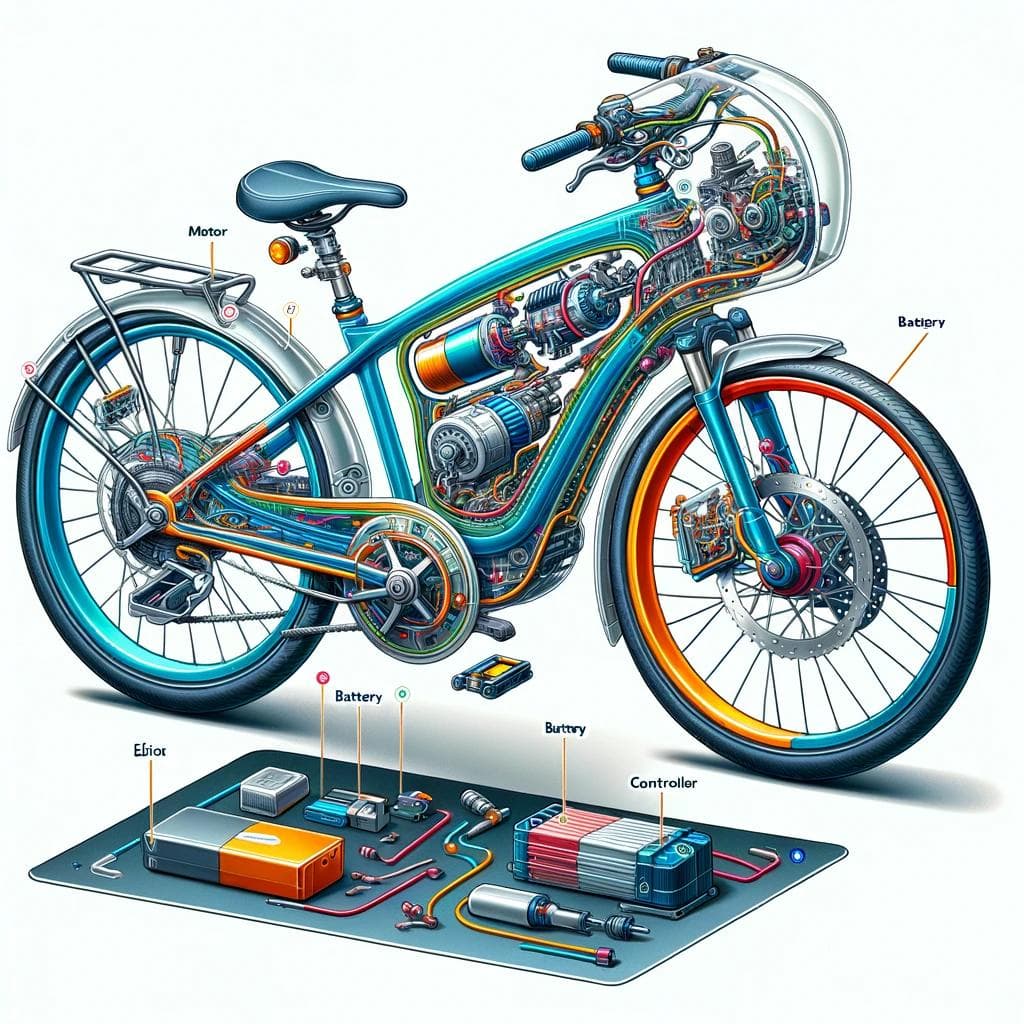
E-bikes, once a quirky niche, are now rapidly conquering the urban and outdoor landscape. But beneath the sleek frame and zippy rides lies a complex interplay of technology. Dive with us into the heart of an e-bike, where batteries pulsate, motors whir, and sensors whisper to each other, orchestrating a smooth and thrilling electric journey.
The Power Core: Batteries and Charging
The e-bike's soul resides in its battery, typically a lithium-ion powerhouse. Inside, a dance of lithium ions flows between anode and cathode, generating electricity. Capacity reigns supreme here, measured in Watt-hours (Wh). Higher Wh means longer rides, but comes at the cost of weight and price. Charging, the e-bike's refueling ritual, uses a dedicated charger and varies in time depending on battery size. Be mindful of fast chargers, as they can shorten battery life.
Motor Mania: Hub, Mid-Drive, or Front Mount?
The electric orchestra's main instrument is the motor. Three placements dominate:
- Hub motors: Tucked neatly into the wheels, they're simple and affordable, but offer less power and efficiency. Rear hub motors add a "push" sensation, while front hubs feel like pulling the bike forward.
- Mid-drive motors: Integrated with the crankset, they offer superior power transfer and handling, feeling more like a natural extension of your pedaling. However, they tend to be heavier and more expensive.
- Front-mounted motors: Less common, they provide good climbing abilities due to weight distribution but can impact steering.
Motor power is measured in watts, with higher wattage translating to more oomph (up to legal limits, of course).
The Conductor in the Cockpit: Sensors and Controllers
E-bikes are brimming with sensors, the watchful eyes of the system. Torque sensors in the cranks or pedals detect your pedaling effort, while cadence sensors measure your leg speed. These inputs, along with throttle data (if present), feed into the brain of the operation: the controller. This electronic maestro uses a pre-programmed algorithm to determine how much motor assistance to provide, ensuring a smooth and responsive ride.
Pedaling Partners: Pedal-Assist vs. Throttle Modes
Most e-bikes offer pedal-assist, where the motor amplifies your pedaling effort. Different levels let you dial in the desired boost, from a gentle nudge to a turbocharged climb conqueror. Some throttle-controlled models allow riding without pedaling, though regulations limit their top speed.
The Safety Symphony: Brakes and Gears
E-bikes need stopping power to match their increased speed. Disc brakes are standard, offering superior stopping force in any weather. Gears, familiar from traditional bikes, help you find the optimal pedaling cadence for efficient riding.
Fuel Gauge and Navigation: The Dashboard Display
Your e-bike's instrument cluster is your window into its soul. It displays vital information like battery level, current assistance level, speed, and even trip data. Some advanced models offer navigation and connectivity features, turning your e-bike into a smart transportation companion.
Maintaining the Ride: Keeping Your E-Bike Charged and Healthy
Regular charging is key, and avoid letting the battery completely drain. Store your e-bike in a cool, dry place, and keep the drivetrain and brakes clean and lubricated. Professional servicing at recommended intervals ensures optimal performance and longevity.
We have technical guides on batteries (here and here) to help you maximize your e-bike charge.
Beyond the Tech: The E-Bike Revolution
E-bikes are more than just technical marvels; they're revolutionizing mobility. They empower people of all ages and fitness levels to enjoy cycling, commute further and faster, and explore new outdoor horizons. So, whether you're a seasoned cyclist seeking a boost or a newcomer to the two-wheeled world, e-bikes offer a thrilling and sustainable way to experience the joy of the open road,

